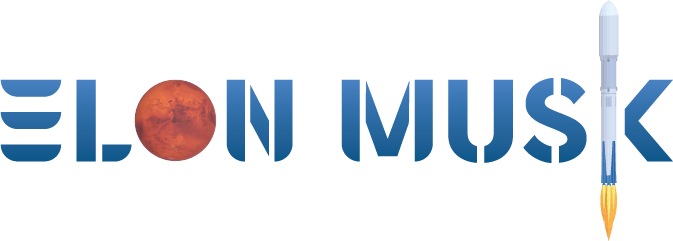
How Hughes is differentiating with its LEO aero ESA
- by Runway Girl
- Jul 18, 2024
- 0 Comments
- 0 Likes Flag 0 Of 5

Hughes Network Systems is confident that its Low Earth Orbit (LEO)-focused electronically steerable antenna (ESA) system for aviation will beat competing LEO-based ESAs on the market both in terms of power and heat consumption.
The firm’s full-duplex, low-profile ESA — which will support Hughes’ own direct-to-airline Eutelsat OneWeb-powered inflight connectivity service, and is the basis of Gogo Business Aviation’s full duplex Galileo FDX antenna — “is under 100lbs, extremely low power, under 400 watts which is unheard of,” Reza Rasoulian, senior vice president of Hughes’ Aviation Business Unit told Runway Girl Network at the Aircraft Interiors Expo in Hamburg.
“I think a lot of the other competing LEO solutions are a lot more power and heat.”
Aviation Week recently reported that SpaceX’s Starlink Aviation kit — which has been STC’d by AeroMech for the King Air 200/300 turboprop (whose flatter fuselages are capable of carrying the first-gen Starlink ESA) — includes a 500-watt power supply.
Hughes showcased its ESA outside of the show, allowing attendees to test Eutelsat OneWeb’s LEO Ku-band service via the hardware. RGN contributor Jason Rabinowitz said FaceTime calls over the connection were “butter smooth and artifact free”. Image: Jason Rabinowitz
“We’ve optimized the design. That’s part of the Hughes engineering prowess,” continued Rasoulian of Hughes’ LEO ESA. “The chips that we use are our design. The beamformers are our design. The algorithms are all Hughes.” The Hughes LEO ESA features four attach points to the aircraft, he noted, and is “very simple to install” with “minimal reinforcements and provisions because of the weight”.
Hardware for commercial aviation will be shipping “in the first half of next year”. A satellite operator and ISP, Hughes is a distribution partner for Eutelsat OneWeb service in aero, and is going direct in commercial aviation with its LEO ESA offering.
Gogo partnership
Hughes recently opened a new state-of-the-art manufacturing facility in Germantown, Maryland and is now “manufacturing at scale ESAs today and shipping them to OneWeb”, Rasoulian said. (Hughes also supports enterprise-grade services on the ground.)
“So, you know, we’re ready; I get asked, on the heels of the Gogo Business Aviation work that is underway and going really well.” Gogo is also using Hughes’ ESA tech for its more compact half-duplex HDX ESA.
The Hughes executive continued in reference to supporting Gogo Galileo for BizAv:
That’s again thousands of antennas in aviation that are on order and we’re close to delivering the first units later in this year.
Rasoulian called Gogo “an amazing partner” noting that they have “a great install base today and you know, dealers and a partner network that really love them, which is really fantastic. And that’s important to us when we think about partnering in certain markets or certain portions of the market.”
He said that CIRs and “being able to provide a quality of service or an SLA” are key differentiators of the Eutelsat OneWeb service that will power Galileo, versus other solutions.
Gogo will face off against SpaceX in the LEO-based IFC realm in business aviation, telling RGN this spring that Galileo will be “competitively priced” to Starlink. Satcom Direct also intends to offer IFC via OneWeb, and holds ESA partnerships with Qest and Gilat.
Boeing talks
Outside of Hughes’ new role as a managed service provider on the Ka-band side of Airbus’s supplier-furnished HBCplus IFC program (under a MOU announced at AIX), and its work producing the LEO-only ESA IFC solution to support Eutelsat OneWeb service in commercial aviation, the firm is, as previously reported, offering two more distinct antenna terminal solutions for retrofit in commercial aviation.
Hughes Jupiter In-flight is a high-throughput Ka-band GEO-now focused product in the Americas and beyond (with a path to Ka-band MEO and LEO in the future) using the popular ThinKom Solutions ThinAir Ka2517 VICTS antenna or, for regional jets, ThinKom’s smaller Ka1717 (with Hughes’ Jupiter auxiliary modem unit), as recently selected by Delta; and, a Hughes Jupiter Fusion product whereby Hughes blends Ka-band GEO (using Ka2517) with Eutelsat OneWeb Ku-band LEO services (using its LEO ESA) in a multi-band, multi-orbit hybrid.
Asked by RGN if Boeing linefit is in the cards for Hughes’ IFC service, Rasoulian said to expect “some news soon”. So a TSA with Boeing is coming soon, we asked? “We’ll see.”
It stands to reason that Hughes will leverage ThinKom’s linefit offerability work for Ka2517. “ThinKom has done a great job with Boeing and giving us a head start so yeah, I think that’s a logical approach to leverage that,” he confirmed.
Related Articles:
Please first to comment
Related Post
Stay Connected
Tweets by elonmuskTo get the latest tweets please make sure you are logged in on X on this browser.
Sponsored
Popular Post
Tesla: Buy This Dip, Energy Growth And Margin Recovery Are Vastly Underappreciated
28 ViewsJul 29 ,2024






 Energy
Energy



















